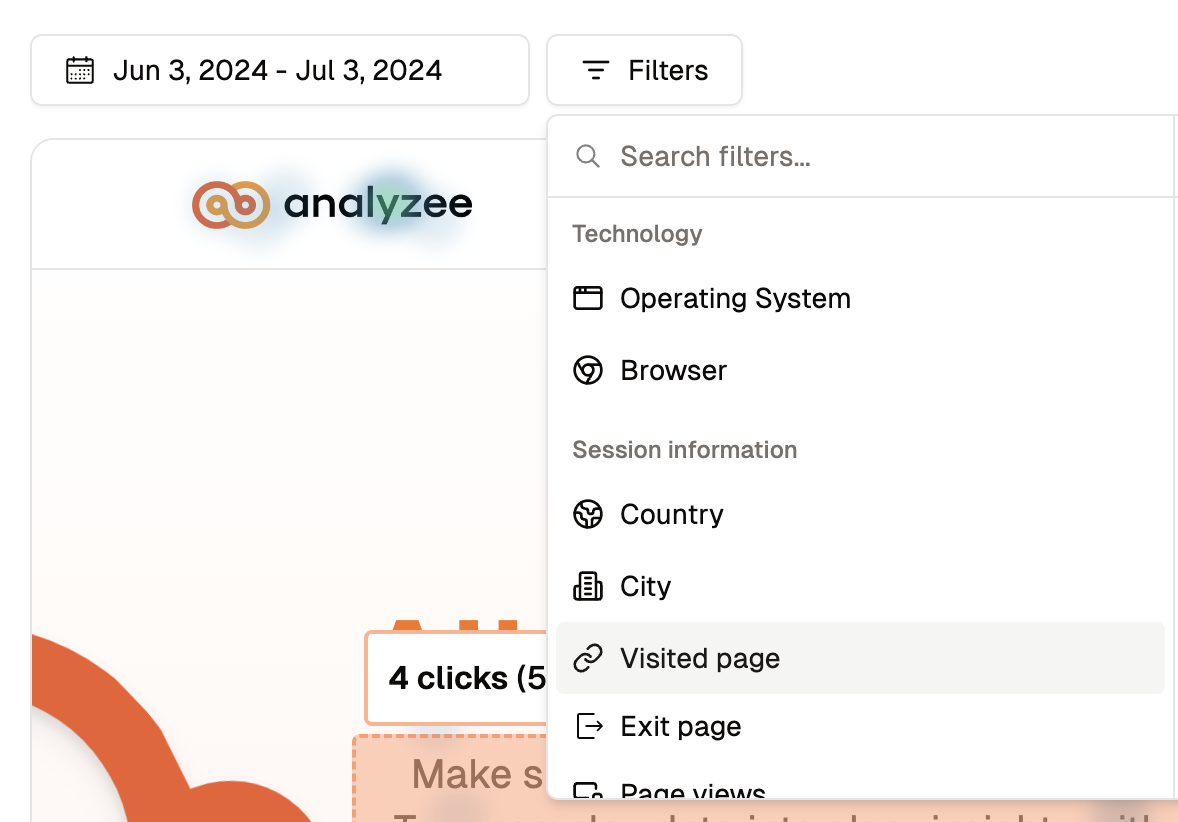Filtering Heatmaps
Filtering heatmaps in Analyzee allows you to refine your analysis and focus on specific criteria, such as time periods, user segments, or device types. By customizing your heatmap view, you can extract actionable insights and identify trends that are relevant to your analysis objectives.
How to Filter Heatmaps
To filter heatmaps in Analyzee, follow these steps:
Sign In: Open the Analyzee Dashboard and sign in to your account.
Navigate to Heatmaps: Access the Heatmaps service by selecting it from the sidebar menu.
Select Heatmap Type: Choose the heatmap type you wish to filter (e.g., All Clicks Heatmap or Dead Clicks Heatmap).
Find the Filters: Look for the filter options on the heatmap interface. It is located in the top left corner. The filters include three main categories: Time Period, General Filters, and Device.

Heatmap Filters
Set Criteria: Define the criteria you want to filter by. For example, you can select a specific time period, filter, or device type.
Apply Filters: Filters are applied automatically once you select the criteria. You will see the heatmap update based on the applied filters.
View Filtered Heatmap: Your heatmap will now display data based on the applied filters, allowing you to analyze specific segments of your data.
The filtering system for heatmaps is described in more detail within the Filters section of the analyzee documentation. Go to the Filters section to learn more about the filtering system in analyzee.
Want to explore more advanced filtering options or customize your heatmap further? Contact our support team for assistance.